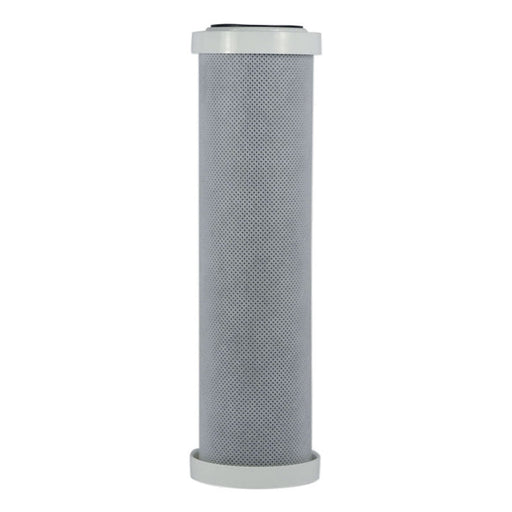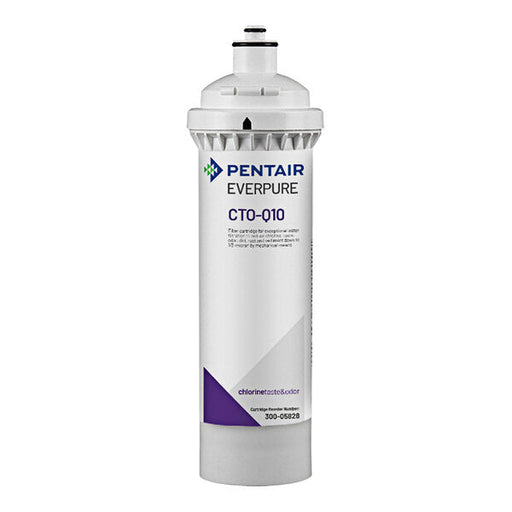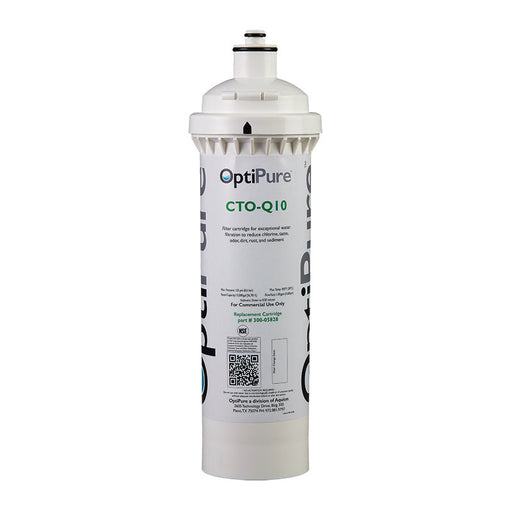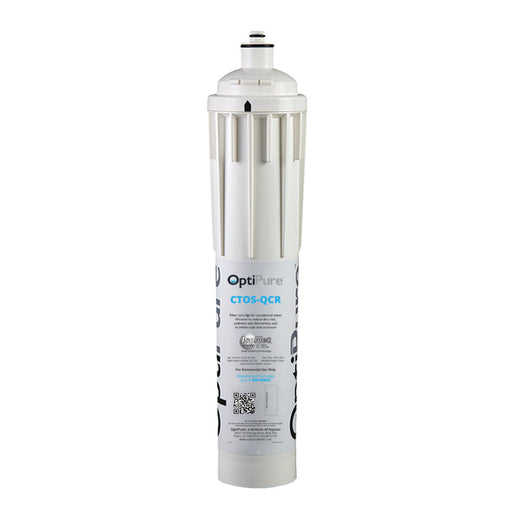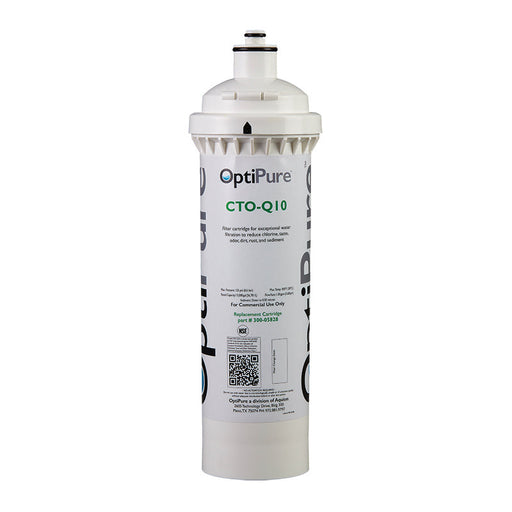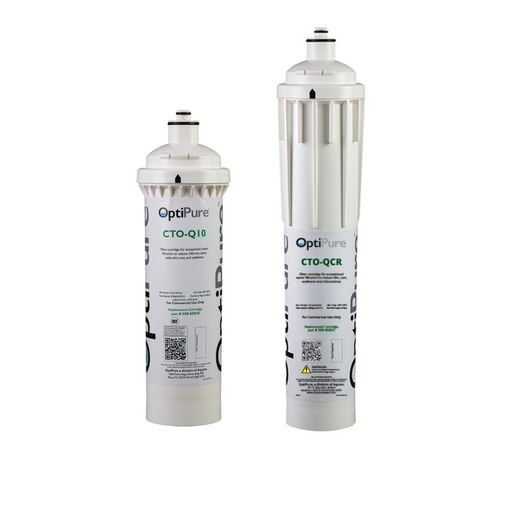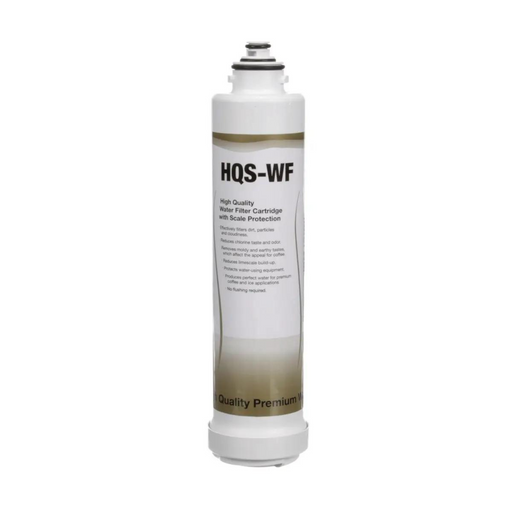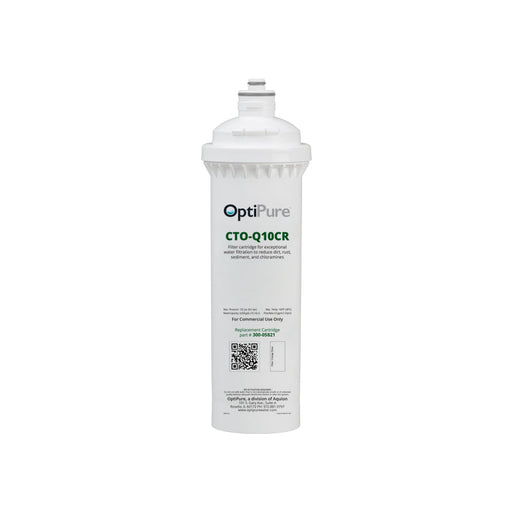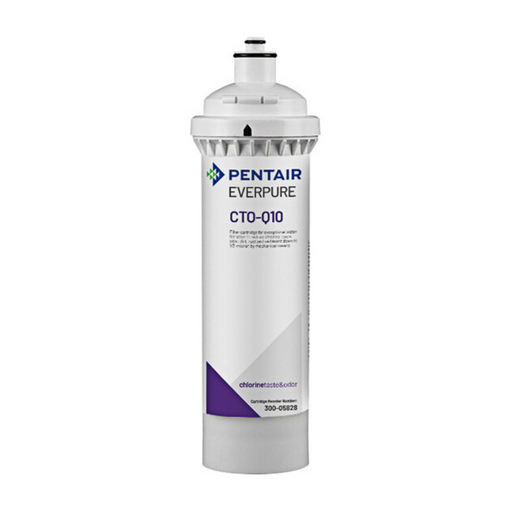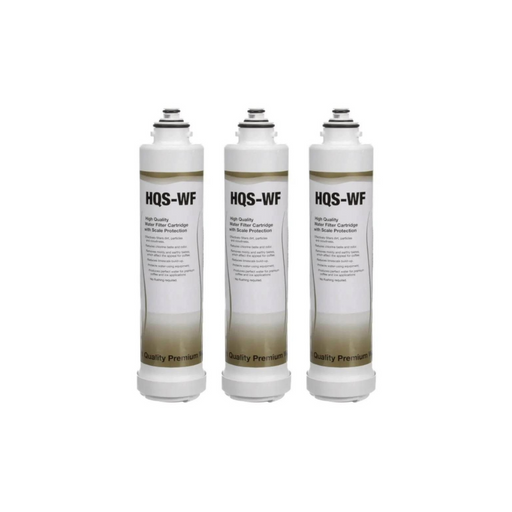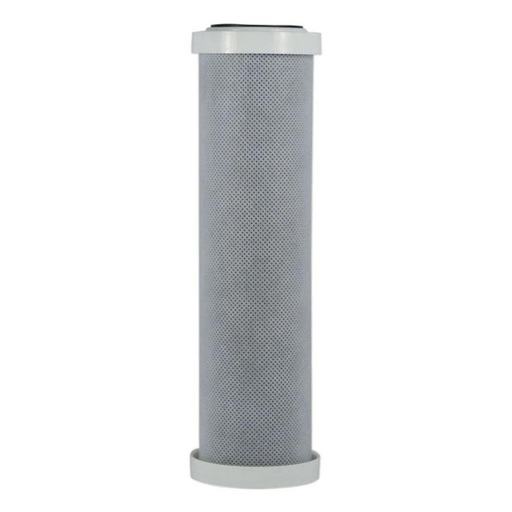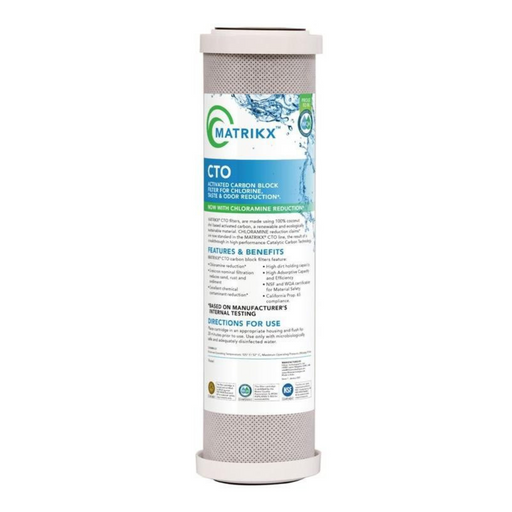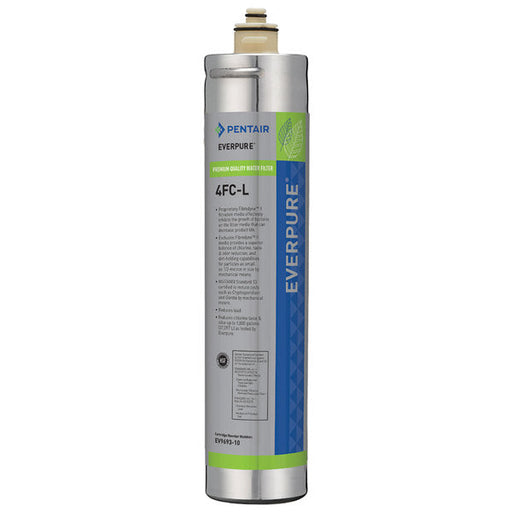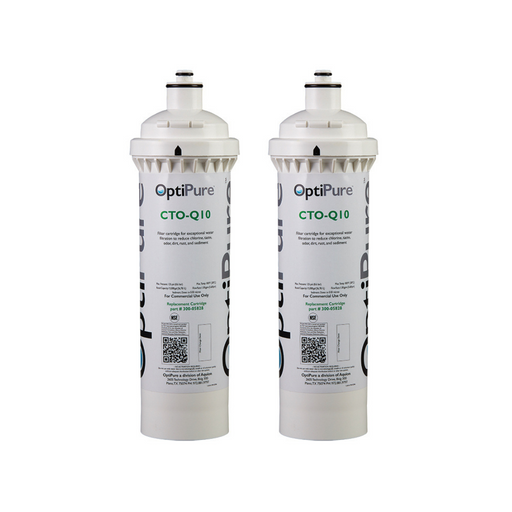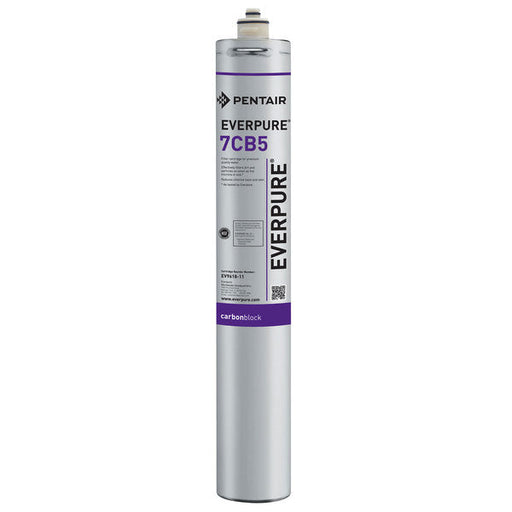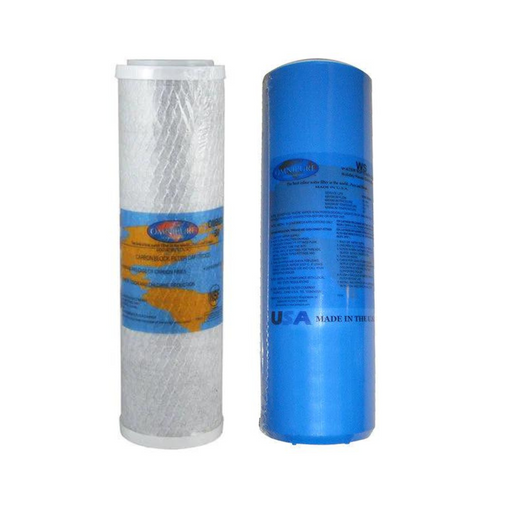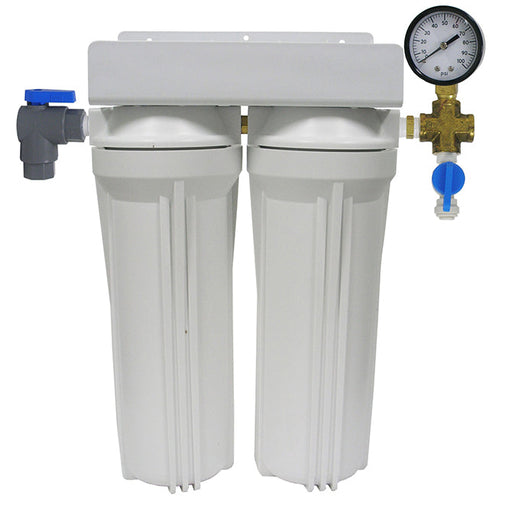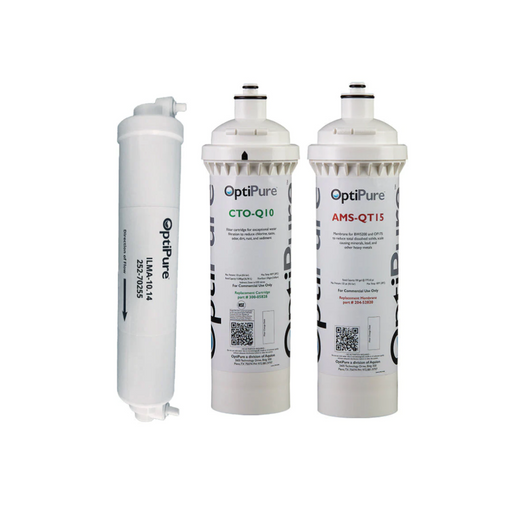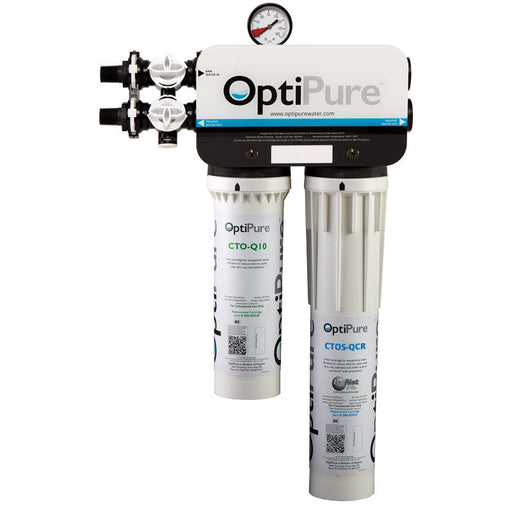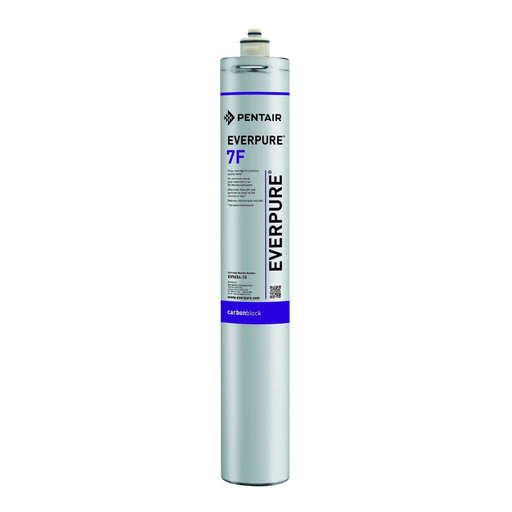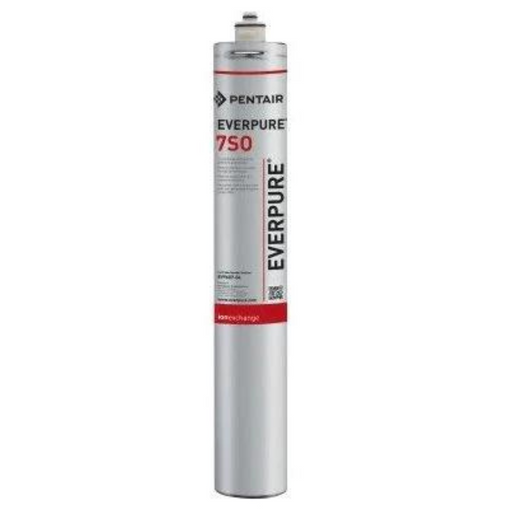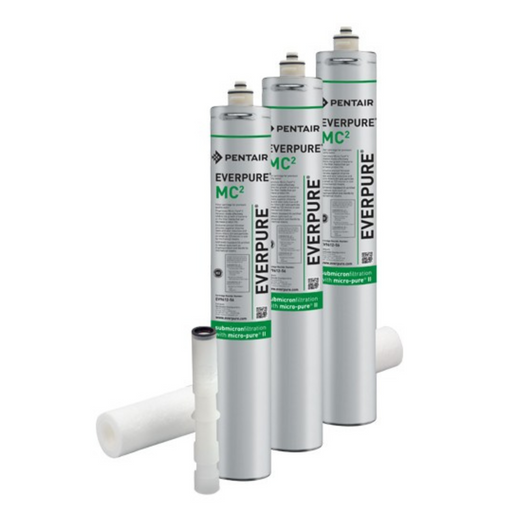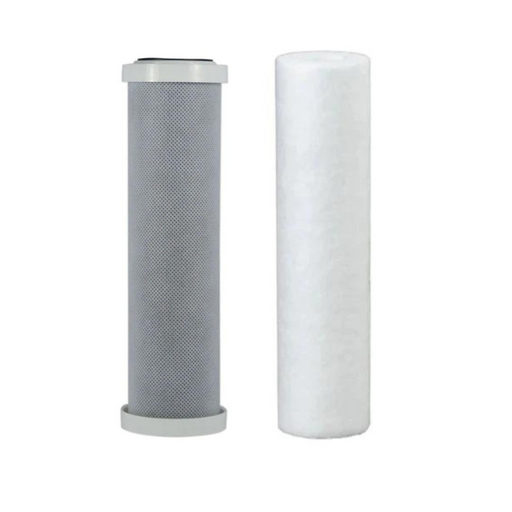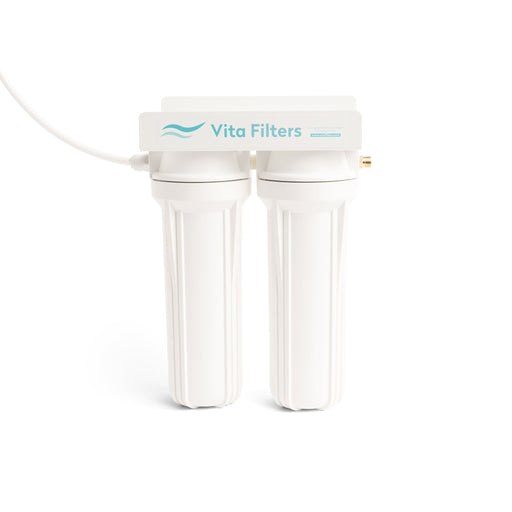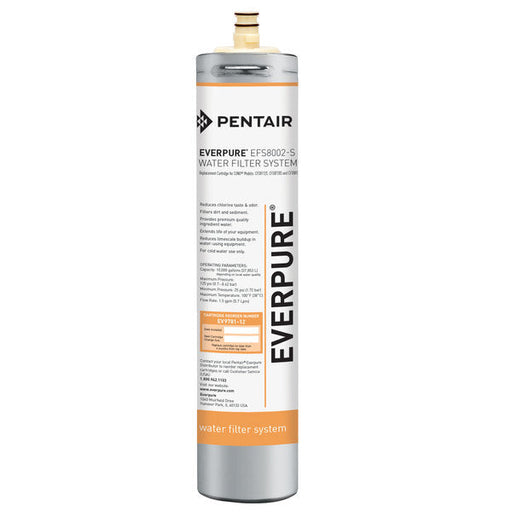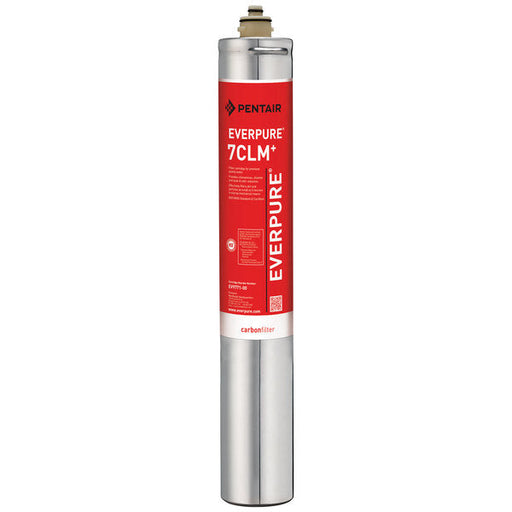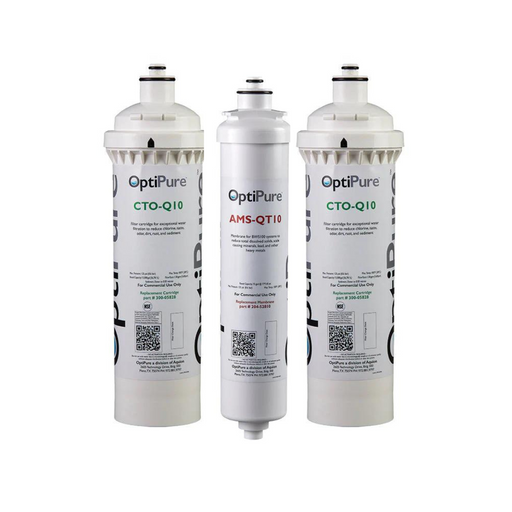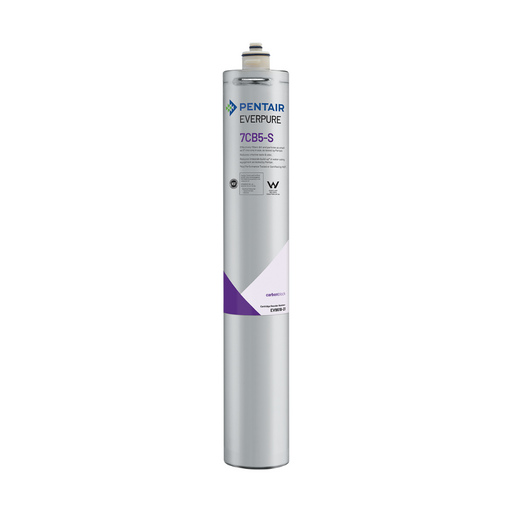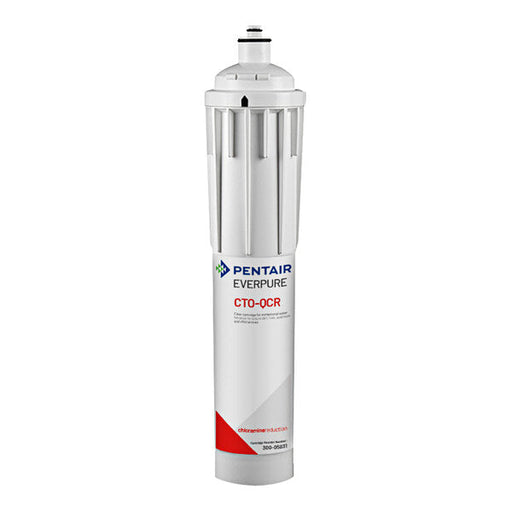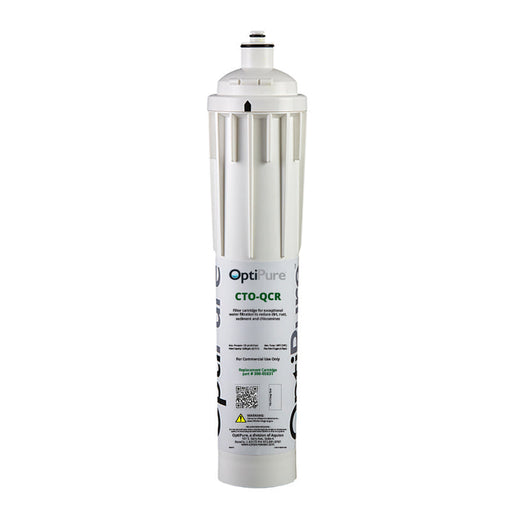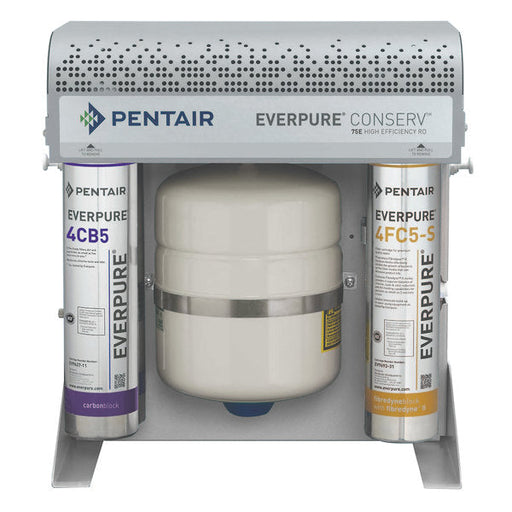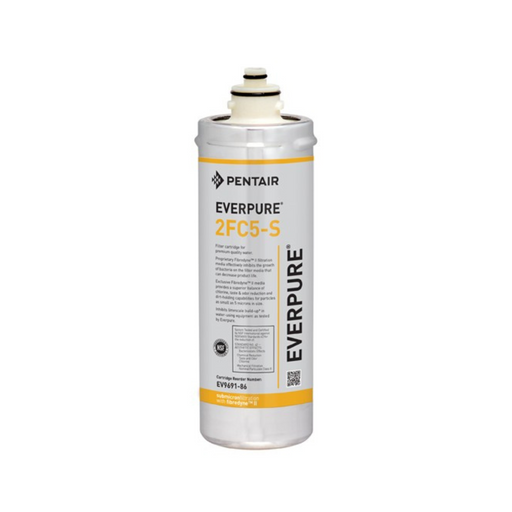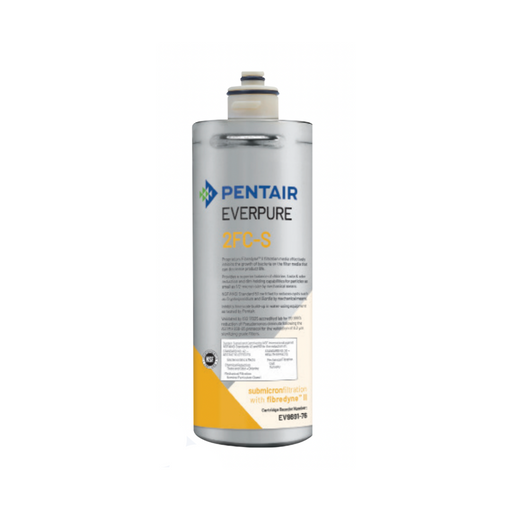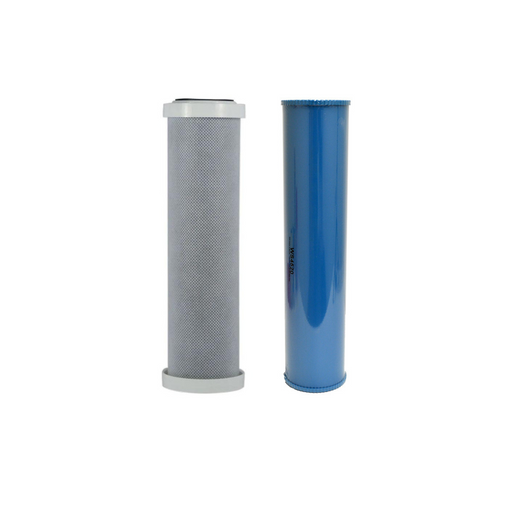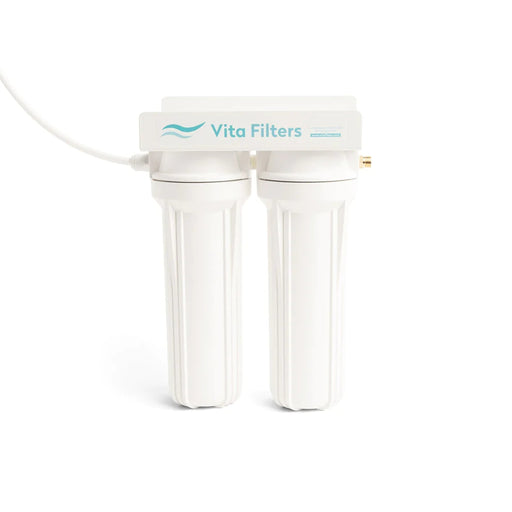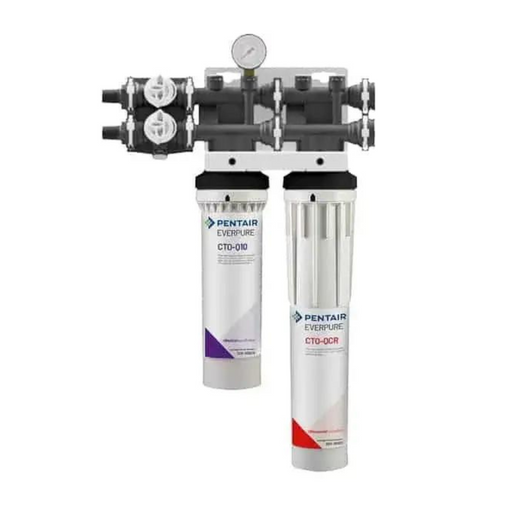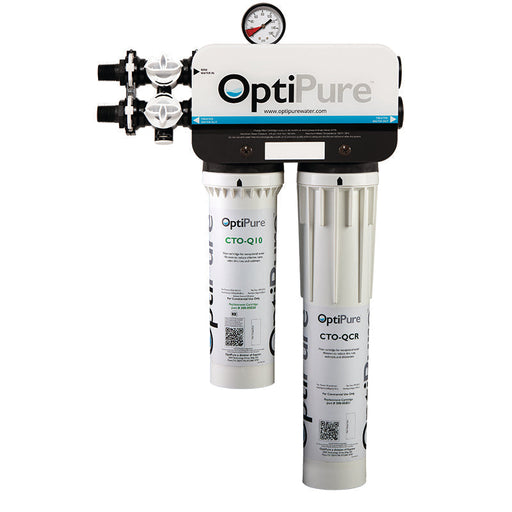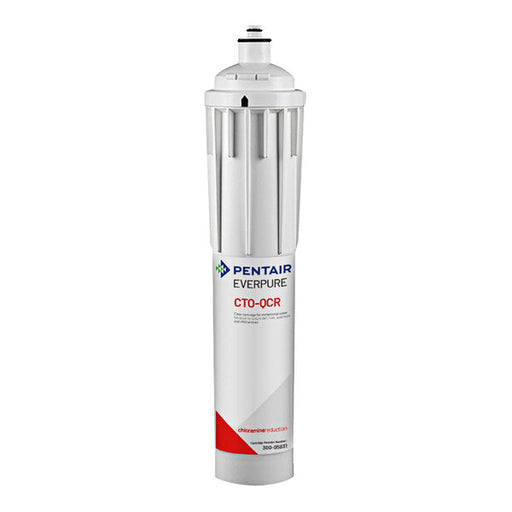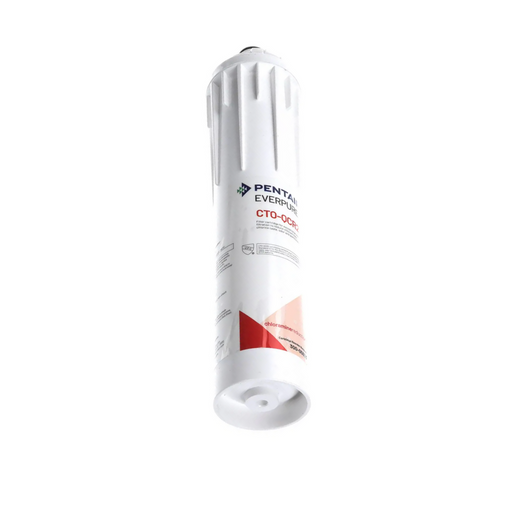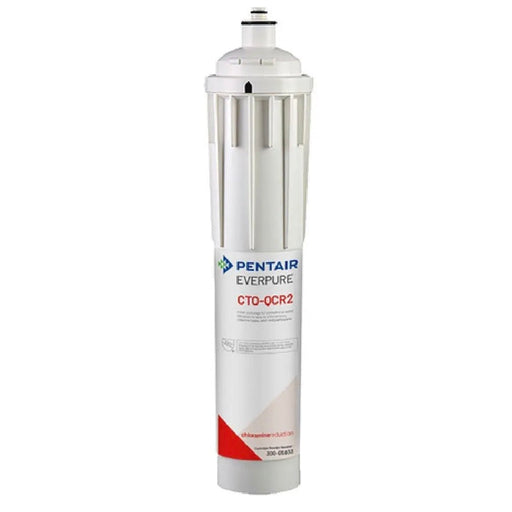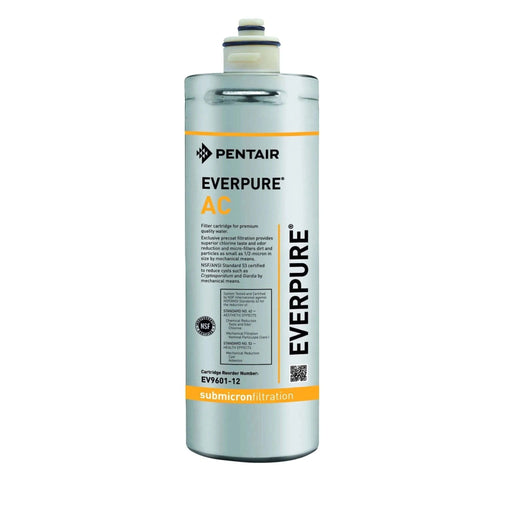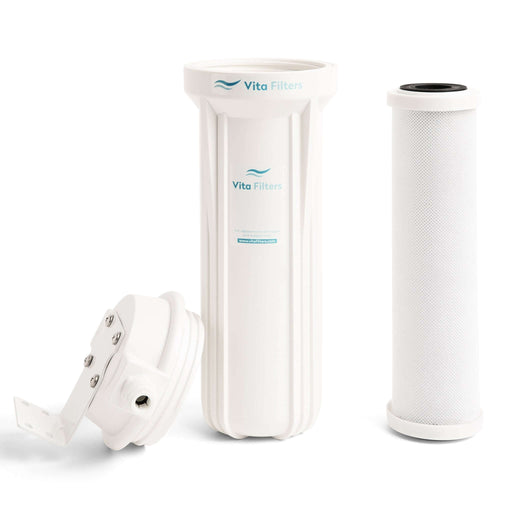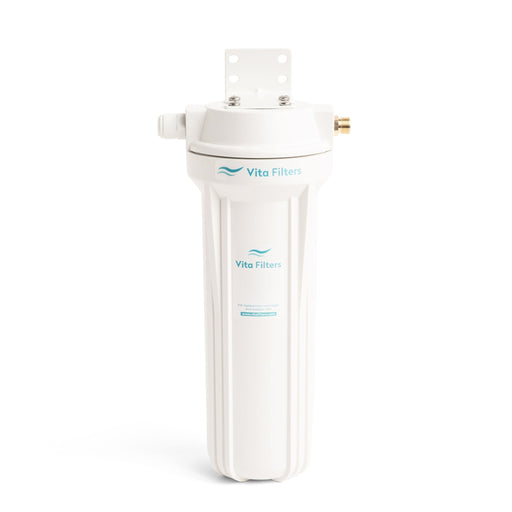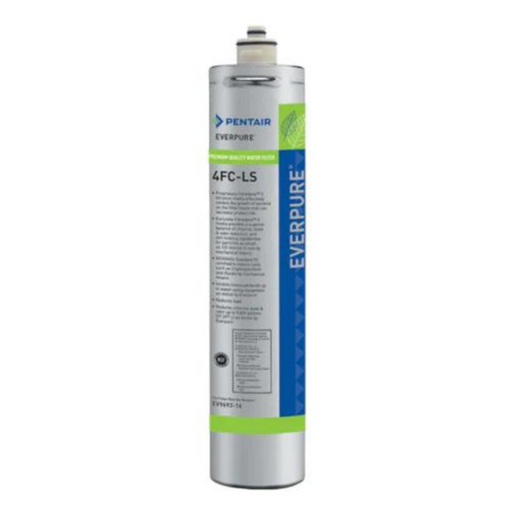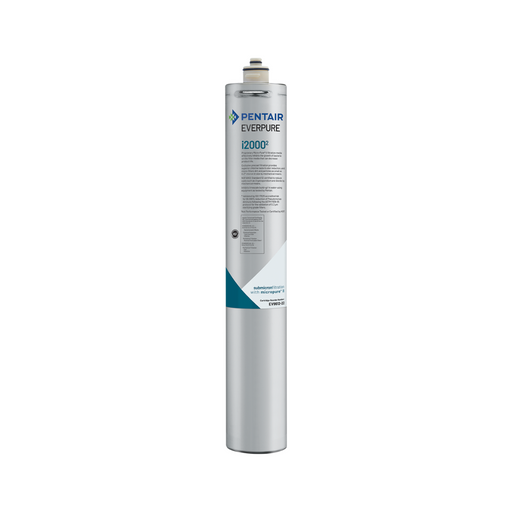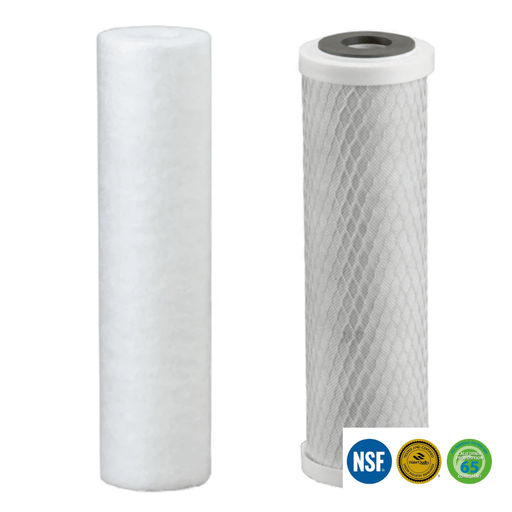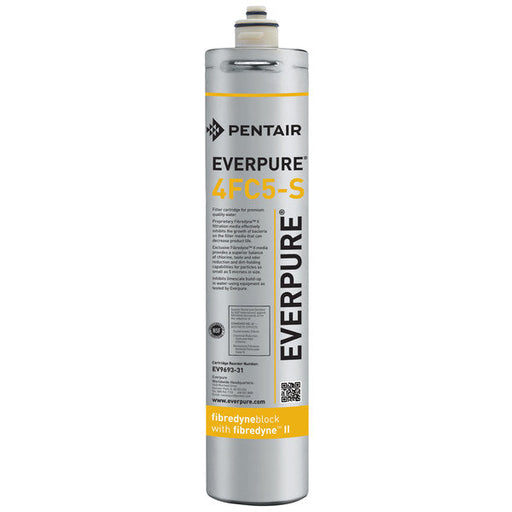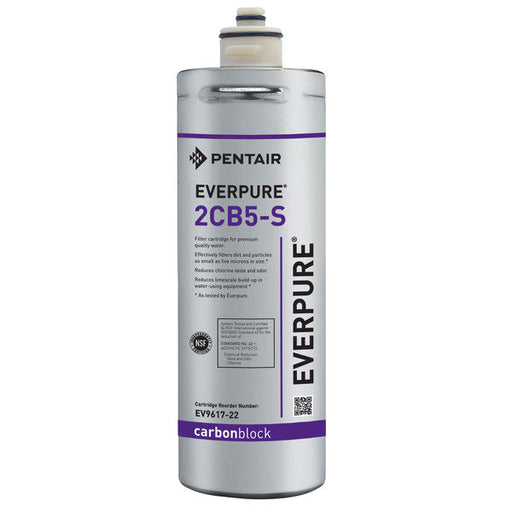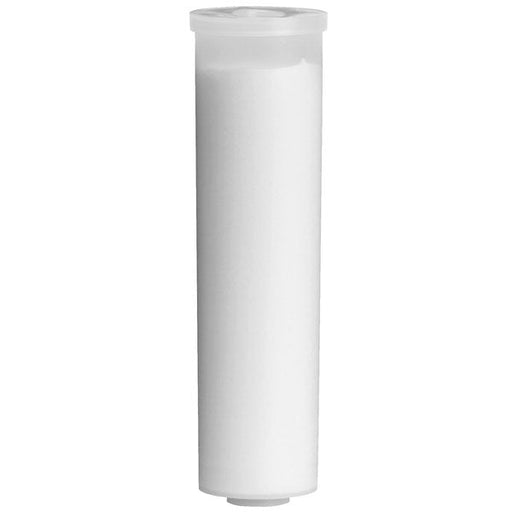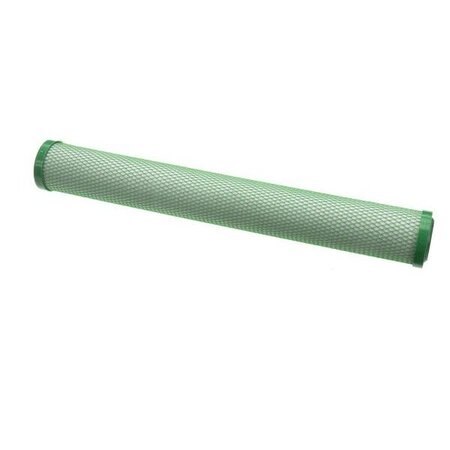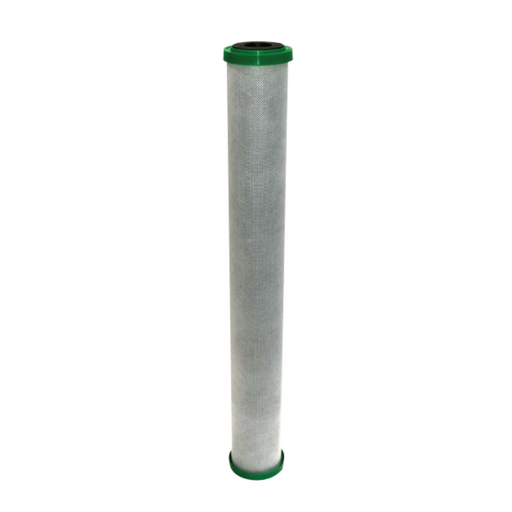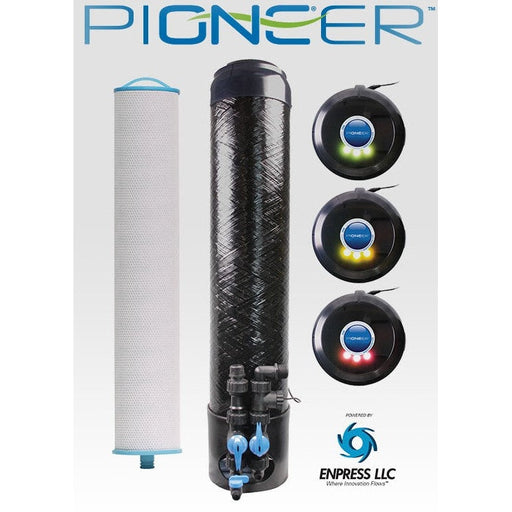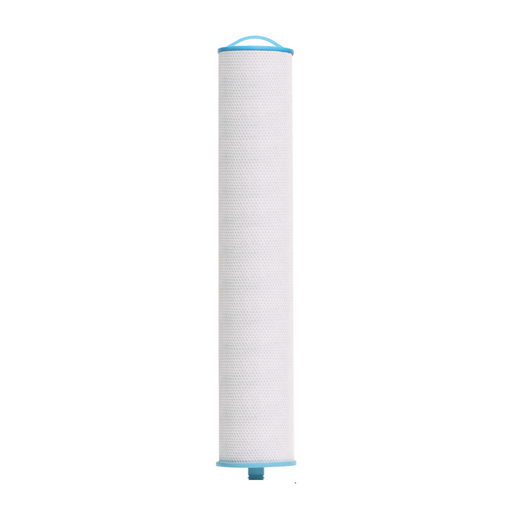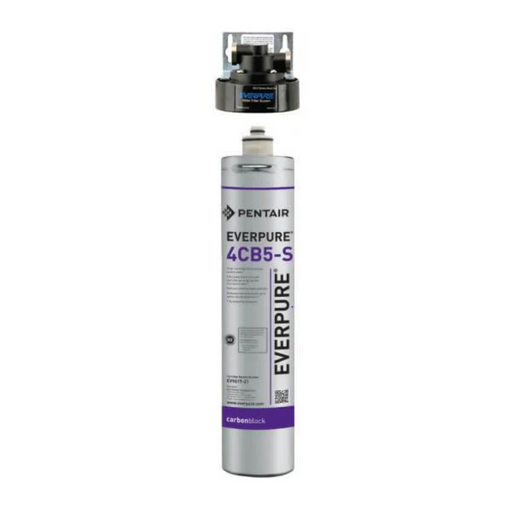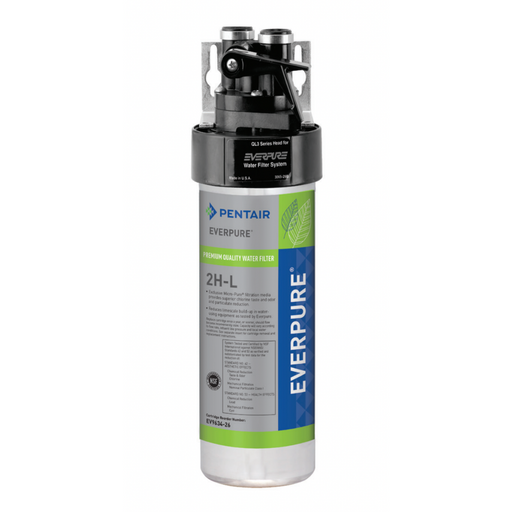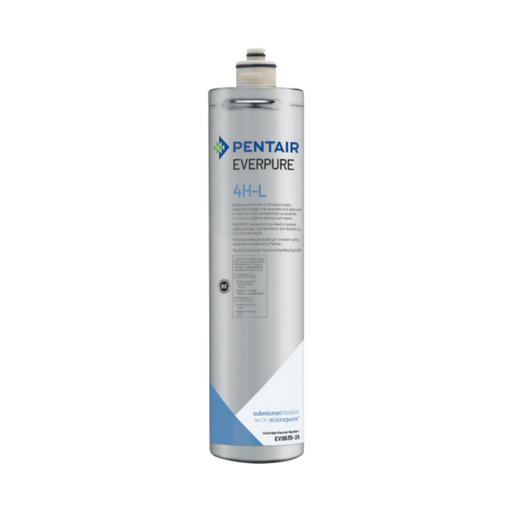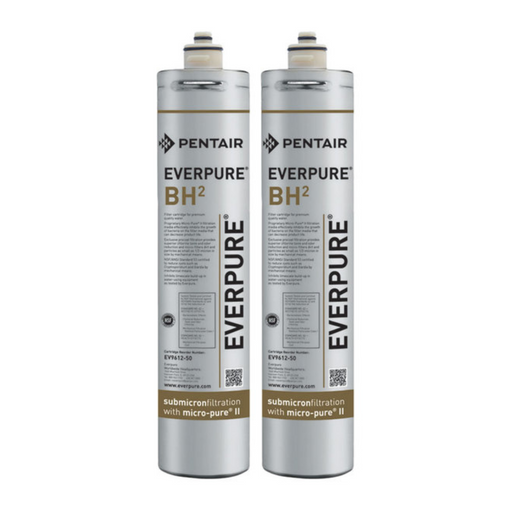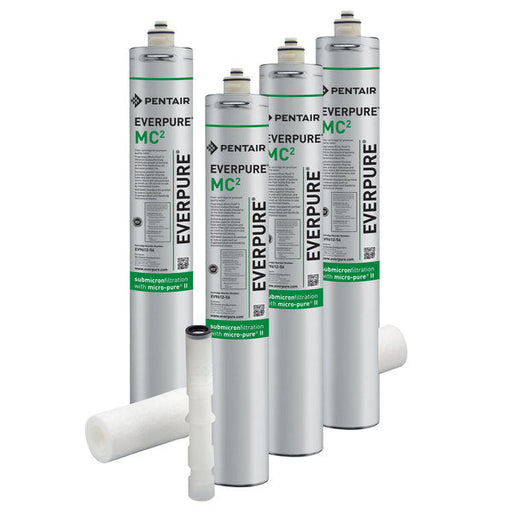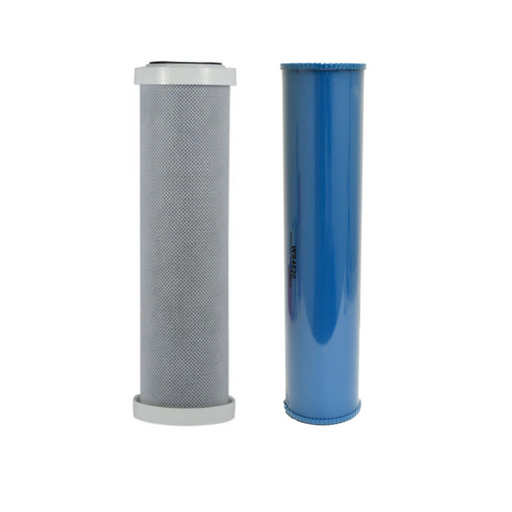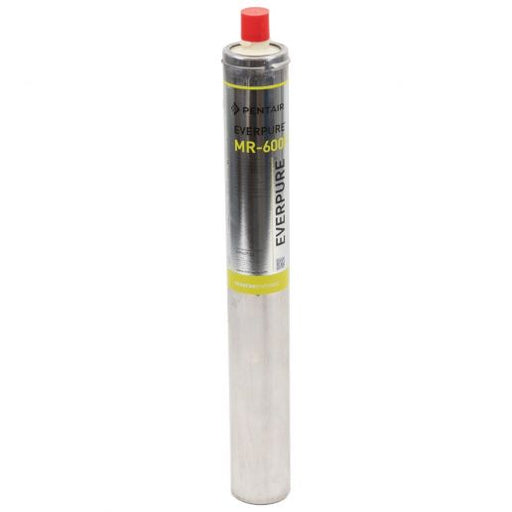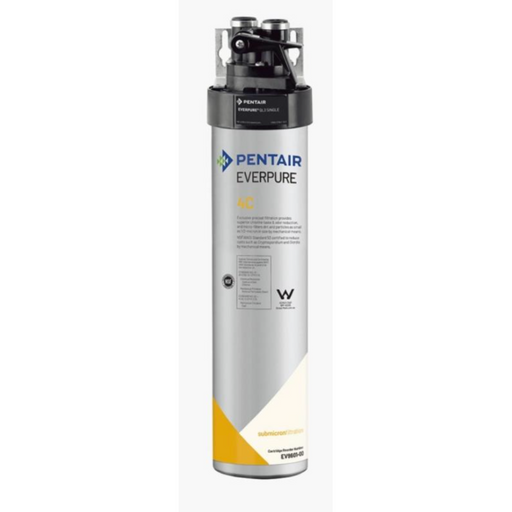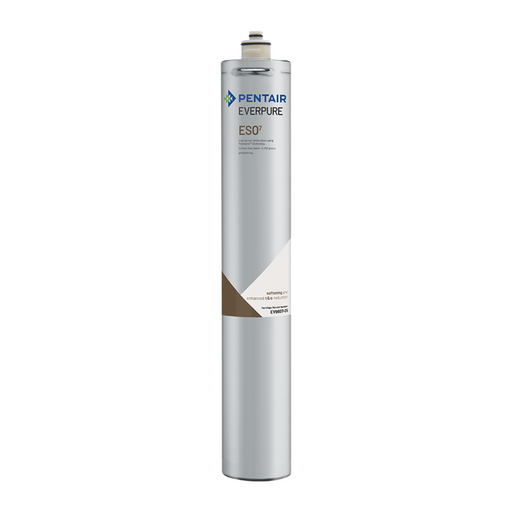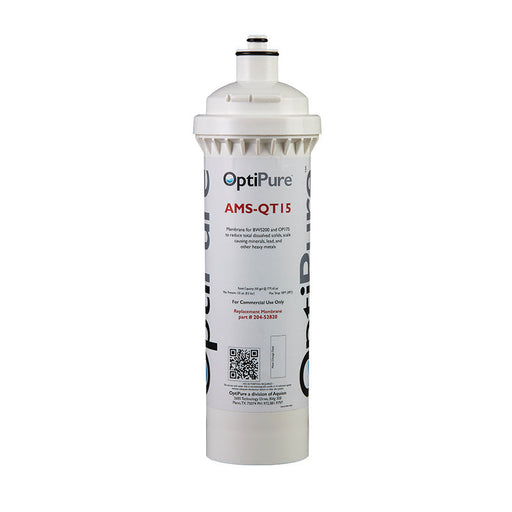Call or Text 303-736-9856
Filters
Vita Filters CTO 10" Carbon Block Filter (9-3/4") Drop-In Compatible with 32-250-10-MATRIKX
Why shop with Vita Filters? Authorized Distributor for Top Brands Free Shipping • No Minimum One (1) Year Warranty 100% Satisfaction Guaranteed! O...
View full detailsOptiPure 300-05828 CTO-Q10 Replacement Cartridge 1.5 GPM 0.5 Micron
The Pentair OptiPure CTO-Q10 is a 10” Qwik-Twist cartridge for use in OptiPure QT10 Series Systems to reduce sediment down to 0.5-microns and reduc...
View full detailsOptiPure 300-05832 CTOS-QCR Scale Chloramine Reduction Cartridge 0.5 GPM
The OptiPure 300-05832 CTOS-QCR is a 15” Qwik-Twist cartridge that reduces chloramines to 6,000 gallons at a flow rate of 0.5 GPM. The cartridge in...
View full detailsOptiPure 170-52081 QTI1+CR Replacement Cartridge Kit CTO-Q10 CTOS-QCR
The CTO-Q10 is a 10” Qwik-Twist cartridge that reduces sediment down to 0.5 microns and reduces chlorine, taste & odor at a flow rate of 1.5 GP...
View full detailsEverpure DEV9830-01 HQS-WF Filter Cartridge
Application: Produces perfect water for premium drinking water applications. Fits Everpure QL1 and QL3b heads. Part of a sanitary quick-change fil...
View full detailsOptiPure 300-05821 CTO-Q10CR Chloramine Cartridge 0.5 GPM
The Optipure CTO-Q10CR is a 10” Qwik-Twist cartridge that reduces chloramines up to 4,000 gallons at a flow rate of 0.5 GPM. Applications: Applica...
View full detailsEverpure 300-05828 CTO-Q10 10" Filter Cartridge 1.5 GPM 0.5 Micron
Supply clean, safe water to your commercial beverage equipment with this Everpure 300-05828 CTO-Q10 filter cartridge. This cartridge directly repla...
View full detailsEverpure DEV9830-01 HQS-WF Filter Cartridge 3-Pack
Application: Produces perfect water for premium drinking water applications. Fits Everpure QL1 and QL3b heads. Part of a sanitary quick-change fil...
View full detailsMatrikx 32-250-10-MATRIKX CTO 10" Carbon Block Filter (9-3/4")
Replacement here: Vita Filters 10" (9-3/4") Carbon Block Filter Drop-in Why shop with Vita Filters? Authorized Matrikx Distributor Free Shipping ...
View full detailsEverpure 4FC-L EV9693-10 Filter Cartridge
With high capacity, the extended-life filter offers submicron particulate reduction, lead, cyst, chlorine taste & odor protection, and more. Th...
View full detailsOptiPure 300-05828 CTO-Q10 Filter Cartridge 2-Pack
The Pentair OptiPure CTO-Q10 is a 10” Qwik-Twist cartridge for use in OptiPure QT10 Series Systems to reduce sediment down to 0.5-microns and reduc...
View full detailsEverpure 7CB5 EV9618-11 Filter Cartridge (Fountain & Vending)
The Everpure 7CB5 Filter Cartridge is a carbon block filter that finely polishes water for high-quality beverage and food applications. Everpure 7C...
View full detailsOmnipure DFKE 10" Dual Espresso Filtration System (Softening)
Espresso/Cappuccino Machine Applications For machine protection and taste, odor, chlorine reduction For Chlorine, Taste, Odor reduction Reduces sa...
View full detailsOptiPure BWS175 RO Replacement Cartridge Kit (CTO-Q10, AMS-QT15, ILMA-10.14)
Replacement cartridges for OptiPure BWS175 Reverse Osmosis RO Systems. Kit includes one (1) of each of the following: CTO-Q10 300-05828 10" Filter...
View full detailsOptiPure 170-52081 QTI1+CR Dual Chloramine Filtration System + IsoNet Scale Reduction
The QTI1+CR is a dual-cartridge water treatment system with two Qwik-Twist cartridges, which reduces sediment over 0.5 microns and reduces chlorine...
View full detailsEverpure 7F EV9654-10 Filter Cartridge Post Filter
Post-treatment cartridge for use in RO applications. Applications: Special application cartridge for use with RO systems For exclusive use as post...
View full detailsEverpure 7SO EV9607-04 Softening Filter Cartridge (Espresso)
The Everpure EV970704 Softening Cartridge is designed to reduce hardness in water that can cause minerals to build up in coffee and espresso equipm...
View full detailsEverpure EV9970-42 Triple-MC2 Cartridge Kit
Convenient replacement cartridge kit for Everpure High Flow CSR Triple-MC² Systems contains all necessary cartridges to service filters in specific...
View full detailsVita Filters Easy Install Dual Drinking Water Filtration System
Why shop with Vita Filters? Authorized Distributor for Top Brands Free Shipping • No Minimum One (1) Year Warranty 100% Satisfaction Guaranteed! O...
View full detailsEverpure EV9781-12 EFS8002-S Filter Cartridge for Cuno 8000 Series
Applications: Food & Beverage and Commercial-Industrial Convenient drop-in design fits most 20" filter bowls Carbon block with 5-micron ratin...
View full detailsEverpure EV9771-00 7CLM+ Filter Cartridge
The Everpure 7CLM+ Cartridge is a high-capacity chloramine reduction solution that delivers premium drinking water for fountain beverage applicatio...
View full detailsOptiPure BWS100 RO Replacement Cartridge Kit (CTO-Q10, AMS-QT10)
The OptiPure BWS100 is a Blended Water System that utilizes Reverse Osmosis (RO) to remove >97% of the Total Dissolved Solids (TDS) from water w...
View full detailsEverpure 7CB5-S EV9618-26 Filter Cartridge (Ice)
The Everpure 7CB5-S filter reduces chlorine taste and odor and other offensive contaminants in your water. The 7CB5-S also contains a scale inhibit...
View full detailsOptiPure 300-05831 CTO-QCR Chloramine Cartridge 0.5 GPM 5 Micron
The CTO-QCR is a 15” Qwik-Twist cartridge that reduces chloramine for up to 6,000 gallons at a flow rate of 0.5 GPM. Applications: Applications r...
View full detailsEverpure EV9977-00 CONSERV 75E Reverse Osmosis System (Espresso)
Designed for heavy-duty applications, this RO System combines true corrosion and scale protection in one solution. The compact system combines a ca...
View full detailsEverpure EV9691-76 2FC-S Cartridge
Everpure 2FC-S Filter Cartridge is designed for food service applications, reduces sediment, CTO, and cysts, and inhibits limescale build-up. The E...
View full detailsVita Filters Easy Install Water Softening & Filtration System
Why shop with Vita Filters? Authorized Distributor for Top Brands Free Shipping • No Minimum One (1) Year Warranty 100% Satisfaction Guaranteed! O...
View full detailsOptiPure 170-52080 QT1+CR Dual Chloramine Filtration System
The Pentair OptiPure QT1+CR, 170-52081 170-52080, is a dual-cartridge water treatment system with two Qwik-Twist cartridges, which reduces sediment...
View full detailsEverpure 300-05831 CTO-QCR 15" Filter Cartridge Chloramine Reduction
Supply clean, safe water to your commercial equipment with this Everpure CTO-QCR filter cartridge. This cartridge is a direct replacement for the o...
View full detailsOptiPure 300-05833 CTO-QCR2 Chloramine Cartridge 1.7 GPM
The Optipure CTO-QCR2 is a 15” Qwik-Twist cartridge that reduces chloramines up to 10,000 gallons at a flow rate of 1.7 gpm Applications: Applica...
View full detailsEverpure EV9601-12 AC Filter Cartridge
The Everpure AC EV9601-12 Filter finely polishes treated water to premium quality for drinking and cooking water applications. This cartridge utili...
View full detailsVita Filters Easy Install Water Filtration System
Why shop with Vita Filters? Authorized Distributor for Top Brands Free Shipping • No Minimum One (1) Year Warranty 100% Satisfaction Guaranteed! O...
View full detailsEverpure 4FC-LS EV9693-16 Filter Cartridge + Scale Reduction
With high capacity, the extended-life filter offers submicron particulate reduction, lead, cyst, chlorine taste & odor protection, and more. Th...
View full detailsEverpure Insurice I20002 & I40002 Filter Cartridge (Ice)
The Pentair Everpure Insurice i2000 & i4000 replacement cartridges deliver premium water for ice machine applications. Prefilter reduces chlori...
View full detailsVita Filters CTO Carbon Block & Sediment Filter Cartridge Kit
Why shop with Vita Filters? Authorized Distributor for Top Brands Free Shipping • No Minimum One (1) Year Warranty 100% Satisfaction Guaranteed! O...
View full detailsEverpure 4FC5-S EV9693-31 Filter Cartridge + Scale Reduction
DELIVER PREMIUM QUALITY DRINKING WATER FOR ICE, STEAM, AND COFFEE APPLICATIONS. The Everpure 4FC5S EV969331 Filter Cartridge provides clear, fres...
View full detailsEverpure 2CB5-S EV9617-22 Filter Cartridge 1.0 GPM
The Everpure EV9617-22 Filter Cartridge reduces limescale build-up that can cause excessive machine downtime and increased maintenance costs. Provi...
View full detailsEverpure HT-10 EV9799-22 Scale Inhibitor Cartridge
Scale prevention and corrosion control for warewashing equipment. Extends the life of expensive foodservice equipment. Replacement filter cartridg...
View full detailsOptipure 252-20620 CCM-20 Chloramine Filter Cartridge 2.0 GPM
The Pentair OptiPure Everpure CCM-20 filter cartridge for 20" drop-in style housings, features catalytic carbon filtration for the reduction of chl...
View full detailsEnpress Pioneer CT-05-CB-AMCYL Whole House Lead Replacement Filter, 0.5 micron
Pioneer Whole House Lead Replacement Filter, 0.5 micron. This is for the replacement lead reduction cartridge only for the Pioneer Whole House lea...
View full detailsEverpure 4CB5-S Filtration System w/ QL2 Head (Coffee)
Ideal for coffee and hot beverage applications. Carbon block filter finely polishes water for high-quality drinking water and beverage and food app...
View full detailsEverpure 2H-L EV9634-26 Filtration System (Drinking Water)
Unique activated carbon-based filter blend reduces chlorine taste & odor and other offensive contaminants—premium quality water for Office Wate...
View full detailsEverpure 4H-L EV9635-26 Filter Cartridge (Drinking Water)
Unique activated carbon-based filter blend reduces chlorine taste & odor and other offensive contaminants—premium quality water for Office Wate...
View full detailsEverpure BH2 EV9612-50 Filter Cartridge 0.5 GPM 2-Pack (Coffee)
The Everpure BH2 EV9612-50 Filter Cartridge provides clear, fresh, premium quality water for consistently great-tasting beverages. Everpure's uniqu...
View full detailsEverpure Quad MC2 EV9628-28 Cartridge Kit (8" Scale Stick)
Designed for use with Everpure high-flow CSR Quad MC2 filtration systems, this filter cartridge kit improves the taste and overall water quality us...
View full detailsVita Filters CTO Carbon Block Filter & Softening Cartridge Kit
Why shop with Vita Filters? Authorized Distributor for Top Brands Free Shipping • No Minimum One (1) Year Warranty 100% Satisfaction Guaranteed! O...
View full detailsEverpure EV9627-22 MR‐600F Reverse Osmosis Membrane Cartridge
The Everpure EV962722 MR-600F Reverse Osmosis Water Filter Replacement Cartridge improves the life and performance of foodservice equipment by remo...
View full detailsEverpure QL3-4C2 Drinking Water Filtration System (Cold Cup Vending)
Everpure EV960550 4C2 Filter Cartridges reduce offensive tastes and odors in water by removing contaminants. Applications: Cold Cup Vending Commer...
View full detailsBest Sellers
Everpure ESO7 EV9607-25 Espresso Water Filter Cartridge 1.0 GPM 5,300 Grains
The Everpure ESO 7 EV960725 Cartridge has a unique three-stage blending process to provide softened, buffered, filtered water for specialty coffee,...
View full detailsOptiPure 300-05828 CTO-Q10 Replacement Cartridge 1.5 GPM 0.5 Micron
The Pentair OptiPure CTO-Q10 is a 10” Qwik-Twist cartridge for use in OptiPure QT10 Series Systems to reduce sediment down to 0.5-microns and reduc...
View full detailsOptiPure 170-52081 QTI1+CR Replacement Cartridge Kit CTO-Q10 CTOS-QCR
The CTO-Q10 is a 10” Qwik-Twist cartridge that reduces sediment down to 0.5 microns and reduces chlorine, taste & odor at a flow rate of 1.5 GP...
View full detailsEverpure DEV9830-01 HQS-WF Filter Cartridge
Application: Produces perfect water for premium drinking water applications. Fits Everpure QL1 and QL3b heads. Part of a sanitary quick-change fil...
View full detailsOptiPure 204-52820 AMS-QT15 Reverse Osmosis RO Membrane
The AMS-QT15 is a 10″ Qwik-Twist replacement membrane for BWS200 and OP175 systems that reduces Total Dissolved Solids (TDS), scale-causing mineral...
View full detailsChloramine Reduction Filters
Chloramines are very common drinking water contaminants, and everybody is familiar with the foul taste & odor they create—at least from swimming pools, if not from drinking water. Usually, their presence is not intended, but about 25% of the most extensive public water supplies in the U.S. add the simplest one, mono-chloramine, to the water on purpose. They use chloramine instead of chlorine because it is more stable in water, allowing for disinfection over longer distances.
About Chloramines
Chloramines are a family of disinfection byproducts (DBPs) formed from the reaction of disinfectant chlorine with the nitrogen atom (N) in ammonia (NH3) or organic compounds containing a reactive nitrogen atom. Many such biological chemicals are in drinking water, mainly derived from cellular debris from killed bacteria and algae. Mono-chloramine is the group's most straightforward and most common member, often produced intentionally from the reaction of pure chlorine and pure ammonia.
Chloramines, in general, are undesirable in drinking water because they are toxic and because they smell and taste bad. However, mono-chloramine is tolerated because it is helpful as a secondary disinfectant, and it is the least toxic and smelly of the group. Still, concentrations above 4.0 mg/L are prohibited. The usefulness of monochloramine comes from its comparative weakness as an oxidizing agent: it retains about 5% of free chlorine's chemical power, which is not strong enough to use as a primary disinfectant, but it is still able to inhibit the re-growth of any survivors of disinfection. It is also too weak to corrode copper and brass plumbing materials, and therefore it lasts much longer in the mains—two or three days instead of just a few hours for free chlorine. Finally, monochloramine is chemically too weak to produce the other common disinfection byproducts—trihalomethanes (THMs), haloacetic acids (HAAs), and halo ketones (HKs), which may pose a health hazard.
Typically water utility companies use free chlorine (or chlorine dioxide or ozone) only in the early water treatment steps. Then, in the end, just as the finished, treated water is about to leave the plant and go out into the water mains, pure ammonia is added to convert the free chlorine residual into chloramine. Without that final adjustment, the free chlorine would continue to produce unwanted THMs, etc., for several more hours and then be gone entirely, leaving the system with no continuing protection.
Standard water treatment practice is to use ½ - 1 ppm of free chlorine or 1 – 2 ppm of monochloramine. Some systems attempt to counteract monochloramine's weakness by using more of it, but all that does is increase the frequency of taste & odor complaints. There is not much difference between the smell of the two at low concentrations. Still, above one ppm, the stink of monochloramine is very objectionable—much worse than free chlorine—and removing it is even more important than eliminating ordinary free chlorine, mainly if the water is used for commercial food/beverage service.
Unfortunately, chloramine is more difficult to remove than plain free chlorine: it reacts weakly and slowly with activated carbon, just like it does with everything else. That means the water must stay in contact with the carbon much longer than if free chlorine alone was present. Many filters need more carbon for the long contact time required for removal. Only products with significant capacity will give satisfactory performance.


